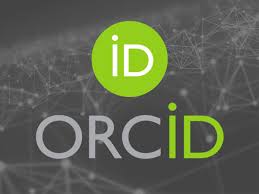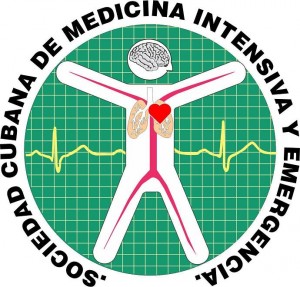Clinical-epidemiological characterization of dengue patients in an intensive care unit
Keywords:
dengue, signs of dengue shock, polyserositis, thrombocytopenia, dengue symptomsAbstract
Introduction: Dengue is an infectious febrile disease of systemic viral etiology. It has a variable clinical presentation and an unpredictable, self-limited and temporarily disabling course.
Objective: To describe clinically-epidemiologically dengue patients admitted to an intensive care unit.
Methods: An observational, descriptive, cross-sectional study was carried out with patients admitted to the Intensive Care Unit at Dr. Ambrosio Grillo Portuondo Hospital in Santiago de Cuba, from January to July 2020. The universe and sample consisted of 117 cases with presumptive diagnosis of dengue, confirmed by IgM on the sixth day of the disease evolution. Clinical and epidemiological variables were studied such as age, sex, and skin color, cause for admission of the patient, stay in the ICU, individual pathological history, clinical alarm signs, platelet count, hematocrit and complications. As summary measure, the percentage and Chi2 test of independence were used. The significance level a = 0.05 was selected, and for qualitative the mean and standard deviation.
Results: The patients whose age was between 35-49 years old (45.4%) predominated, followed by the group of 50-64 years (37.6%). 66.7% of the cases had platelet penia; and 14.5% had bleeding. The most recurrent clinical warning signs were abdominal pain and bleeding. Thrombocytopenia was observed in the age groups of 35-49 years and 50-64 years. 50.4% of the patients had no previous associated chronic pathologies.
Conclusions: Among the patients, those older than 30 years and those female predominated. Bleeding and thrombocytopenia were the most observed causes for admission. The hematocrit and platelet count are confirmed as indispensable indicators in the management of the disease.
Downloads
References
1. Cuba. Centro Nacional de Información de Ciencias Médicas. Biblioteca Médica Nacional. Dengue. Complicaciones. Bibliomed Suplemento. 2019 [citado: 15/01/2020]. Disponible en: http://files.sld.cu/bmn/files/2019/03/bibliomed-suplemento-marzo-2019.pdf
2. Arias J. El dengue en Cuba. Revista Panamericana de Salud Pública. 2002 [citado: 18/01/2020];1(4). Disponible en: https://www.scielosp.org/article/rpsp/2002.v11n4/221-222/
3. Choque-Chávez F, Huamaní-Fuente F, Canelo-Aybar C. Síntomas crónicos tras episodio de dengue, una necesidad de investigación. Rev Peru Med Exp Salud Pública. 2016 [citado 27/01/2020];33(1). Disponible en: https://www.scielosp.org/scielo.php?script=sci_arttext&pid=S1726-46342016000100181&lng=en&nrm=iso&tlng=en
4. Martínez Torre E. Dengue. Estud. av. 2008 [citado: 04/02/2020];22(64). Disponible en: http://www.scielo.br/scielo.php?script=sci_arttext&pid=S0103-40142008000300004
5. OPS/OMS. Dengue [citado: 20/02/2020]. Disponible en: https://www.paho.org/hq/index.php?option=com_topics&view=article&id=1&Itemid=40734&lang=es
6. Frantchez V, Fornelli R, Pérez Sartori G, Arteta Z, Cabrera S, Sosa L, et al. Dengue en adultos: diagnóstico, tratamiento y abordaje de situaciones especiales. Rev Méd Urug. 2016 [citado: 27/02/2020];32(1). Disponible en: http://www.scielo.edu.uy/scielo.php?script=sci_arttext&pid=S1688-03902016000100006&lng=es
7. Savargaonkar D, Sinha S, Srivastava B, Nagpal BN, Sinha A, Shamim A, et al. Un estudio epidemiológico del dengue y sus coinfecciones en Delhi. Int J Infect Dis. 2018 [citado: 05/03/2020];74. Disponible en: https://linkinghub.elsevier.com/retrieve/pii/S1201-9712(18)34455-2
8. Centros para el Control y la Prevención de Enfermedades. Dengue [citado: 10/03/2020]. Disponible en: https://www.cdc.gov/spanish/enfermedades/dengue/index.html
9. Centro Nacional de Información de Ciencias Médicas. Temas de Salud: Dengue. La Habana: Centro Nacional de Información de Ciencias Médicas - Infomed [citado: 23/03/2020]. Disponible en: https://temas.sld.cu/dengue/
10. Organización Panamericana de la Salud. Dengue: Guías para la atención de enfermos en la Región de las Américas. 2da ed. Washington, DC: OPS; 2016 [citado: 04/04/2020]. Disponible en: http://iris.paho.org/xmlui/bitstream/handle/123456789/28232/9789275318904_esp.pdf?seq
11. Organización Panamericana de la Salud. Organización Mundial de la Salud. Dengue: Guías para el diagnóstico, tratamiento, prevención y control. La Paz, Bolivia: OPS/OM; 2009[citado: 12/04/2020]. Disponible en: https://apps.who.int/iris/bitstream/handle/10665/44504/9789995479213_spa.pdf?sequence=1
12. Kourí G. El dengue un problema creciente de salud en las Américas. Rev Cub Sal Pub. 2011 [citado: 16/04/2020];37(Suppl 5):616-8. Disponible en: http://scielo.sld.cu/scielo.php?script=sci_arttext&pid=S0864-34662011000500010&ing=es
13. Sigüenza Murgueitio JM. Evaluación de 4 casos de dengue con signos de alarma que ingresaron en el Hospital Básico Huaquillas, período enero-diciembre de 2016 [tesis]. Machala: Universidad Técnica de Machala; 2018 [citado: 23/04/2020]. Disponible en: http://repositorio.utmachala.edu.ec/handle/48000/12375
14. GómezOchoa SA. Viremia en plasma como factor asociado a gravedad en la infección por el virus del dengue: revisión sistemática de la literatura. RevChilInfectol. 2018 [cit ado: 29/04/2018];35(2). Disponible en: https://scielo.conicyt.cl/scielo.php?script=sci_arttext&pid=S0716-10182018000200176
15. Macías Miranda CD, Gámez Sánchez D, Rodríguez Valdés A, Baquero Suárez J. Características clínicas y epidemiológicas de la epidemia de dengue en el municipio de Santiago de Cuba. MEDISAN. 2013 [citado: 01/05/2020];17(8). Disponible en: http://scielo.sld.cu/scielo.php?script=sci_arttext&pid=S1029-30192013000800009
16. Correa Martínez L, Cabrera Morales C, Martínez Licor M, Martínez Núñez M. Consideraciones clínicas y terapéuticas sobre el dengue. CCM Holguín. 2016 [citado: 12/05/2020];20(1). Disponible en: http://scielo.sld.cu/scielo.php?script=sci_arttext&pid=S1560-43812016000100008
17. Organización Panamericana de la Salud. Instrumento para el diagnóstico y la atención a pacientes con sospecha de arbovirosis. Washington, DC: OPS; 2016.
18. Lugo S, Morilla L, Bejerano O, Basualdo W, Paulicih V. En dengue con signos de alarma ¿Podemos predecir evolución a grave desde la emergencia? RevSoc Bol Ped. 2015 [citado: 16/05/2020];54(1). Disponible en: http://www.scielo.org.bo/scielo.php?script=sci_arttext&pid=S1024-06752015000100007
19. Figueroa CL, Gélvez M, Niederbacher J. Reguladores de integridad endotelial como posibles predictores de severidad en dengue. Biomédica.2016 [citado: 16/05/2020];36(Suppl 2):148-55. Disponible en: http://www.scielo.org.co/pdf/bio/v36s2/v36s2a16.pdf
20. Rodríguez Salazara CA, Recalde Reyes DP, González MM, Padilla Sanabria L, Quintero Álvarez L, Gallego Gómez JC, et al. Manifestaciones clínicas y hallazgos de laboratorio de una serie de casos febriles agudos con diagnóstico presuntivo de infección por el virus dengue. Infectio.2016 [citado: 16/05/2020];20(2):84-92. Disponible en: https://www.sciencedirect.com/science/article/pii/S0123939215000909
21. Laoprasopwattana K, Binsaai J, Pruekprasert P, Geater A.Prothrombin Time Prolongation was the Most Important Indicator of Severe Bleeding in Children with Severe Dengue Viral Infection. J TropPed. 2017 [citado: 16/05/2020];63(4):314-20. Disponible en: https://www.ncbi.nlm.nih.gov/pubmed/28177091
22. Farreras P, Rozman C. Medicina interna. 17a ed. Barcelona: Elsevier; 2012.
23. Kasper D, Braunwald E, Fauci A, Hauser S, Longo D, Jameson L. Harrison: Princípios de Medicina Interna. 18ª ed. New York: McGraw-Hill Interamericans; 2012.
24. Delgado Martínez I. Historia del dengue en Cuba. Infomed - Centro Nacional de Información de Ciencias Médicas. 2017 [citado: 18/05/2020]. Disponible en: http://www.sld.cu/sitios/dengue/verpost.php?blog=http://articulos.sld.cu/dengue/&post_id=66&c=2987&tipo=2&idblog=158&p=1&n=dff
25. Organización Mundial de la Salud. Dengue y dengue hemorrágico. Nota descriptiva N° 117. 2017 [citado: 18/05/2020]. Disponible en: http://www.who.int/mediacentre/factsheets/fs117/es/
26. Martínez Torres E. Dengue y dengue hemorrágico: aspectos clínicos. 2015 [citado: 18/05/2020]. Disponible en: http://www.google.com.cu/url?sa=t&rct=j&q=&esrc=s&source=web&cd=1&cad=rja&uact=8&ved=0ahUKEwiCqtHaq9TUAhXGWz4KHfRyCjYQFggqMAA&url=http%3A%2F%2Fsaludpublica.mx%2Findex.php%2Fspm%2Farticle%2Fview%2F4562%2F5016&usg=AFQjCNGy7mIziAML4V_XNHxXvB7M6dI35g
27. Guzman MG, Harris E. Dengue. Lancet. 2015 [citado: 19/05/2020];385(9966):453-65. Disponible en: http://www.sciencedirect.com/science/article/pii/S0140673614605729
28. Wilder-Smith A, Ooi E, Horstick O, Wills B. Dengue. Lancet. 2019 [citado: 20/05/2020];393(10169):350-63. Disponible en: https://doi.org/10.1016/s0140-6736(18)32560-1
29. Muller DA, Depelsenaire ACI, Young PR. Clinical and Laboratory Diagnosis of Dengue Virus Infection. The Journal of Infectious Diseases. 2017 [citado: 21/05/2020];215(suppl_2):S89-S95. Disponible en: https://doi.org/10.1093/infdis/jiw649






